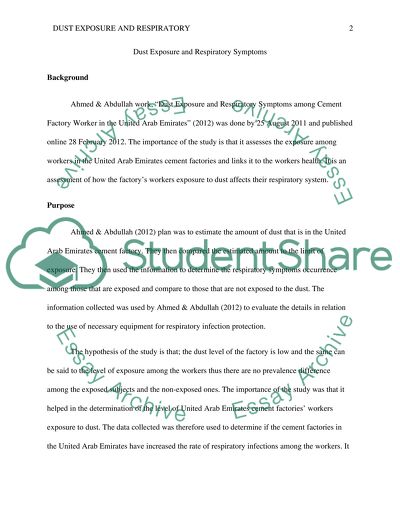Cite this document
(Dust Exposure and Respiratory Symptoms Case Study, n.d.)
Dust Exposure and Respiratory Symptoms Case Study. Retrieved from https://studentshare.org/professional/1687850-dust-exposure-and-respiratory-symptoms-among-cement-factory-workers-in-the-united-arab-emirates
Dust Exposure and Respiratory Symptoms Case Study. Retrieved from https://studentshare.org/professional/1687850-dust-exposure-and-respiratory-symptoms-among-cement-factory-workers-in-the-united-arab-emirates
(Dust Exposure and Respiratory Symptoms Case Study)
Dust Exposure and Respiratory Symptoms Case Study. https://studentshare.org/professional/1687850-dust-exposure-and-respiratory-symptoms-among-cement-factory-workers-in-the-united-arab-emirates.
Dust Exposure and Respiratory Symptoms Case Study. https://studentshare.org/professional/1687850-dust-exposure-and-respiratory-symptoms-among-cement-factory-workers-in-the-united-arab-emirates.
“Dust Exposure and Respiratory Symptoms Case Study”, n.d. https://studentshare.org/professional/1687850-dust-exposure-and-respiratory-symptoms-among-cement-factory-workers-in-the-united-arab-emirates.


